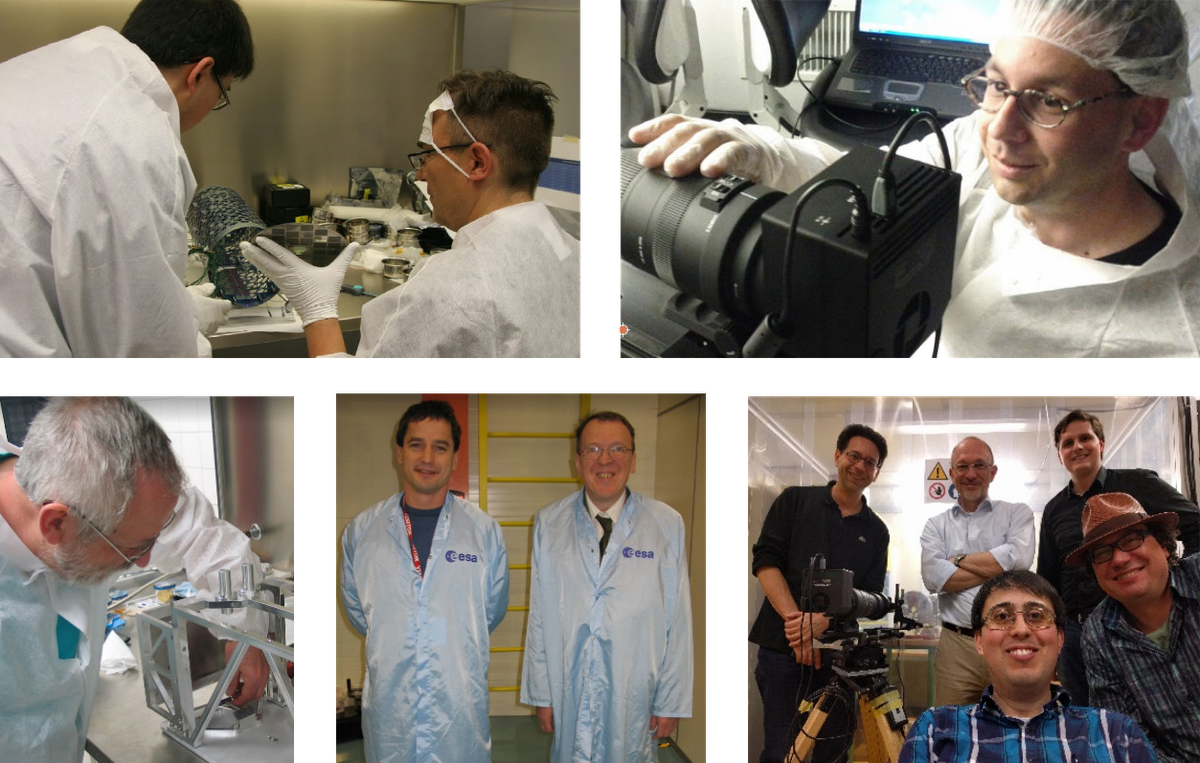Solar Orbiter



Solar Orbiter (SolO) is an ESA space probe that is part of the Cosmic Vision program. Its primary science goal is to understand how the Sun creates and controls the heliosphere. The science payload consists of ten instruments built by different consortia in Europe. NASA also participates in the project, one of the contributions being the launch (see also the Solar Orbiter blog). SolO was launched on February 9, 2020 at 11:03 p.m. local time (February 10, 2020 at 5:03 CET) from launch Complex 41 at Cape Canaveral Air Force Station in Florida on an Atlas V 411 rocket.
Lift-off of Solar Orbiter on top of an Atlas V rocket
Credit: United Launch AllianceAfter launch, the spacecraft will travel to approach the Sun for an extended period before the Nominal Mission Phase can start in November 2021. SolO's mission is to explore the Sun - our nearest star - with unprecedented resolution at wavelength ranges that cover the visible, radio, extreme ultraviolet, and X-ray ranges. At the same time, Solar Orbiter will perform comprehensive in-situ measurements. This will make it possible to relate phenomena on the Sun to effects in interplanetary space.
SolO's trajectory will take the spacecraft to the vicinity of the Sun. During closest approach SolO will only be about 60 solar radii (42 million km, or 0.28 astronomical units; an astronomical unit corresponds to the distance between Earth and Sun) away from the Sun's surface. There the spacecraft will experience about 13 times the radiation flux that it would experience from Earth's orbit. In order to protect the spacecraft and its instruments, it carries a sophisticated heat shield (sandwich structure of high-temperature multi-layer insulation foil coated with "Solar Black") that can withstand the high temperatures.
SolO will be in a resonant orbit around the Sun with Venus. With each gravity assist manoeuvre at Venus that SolO will perform every third orbit around the Sun, its inclination will slightly increase. At the end of the Extended Mission Phase (in 2030), SolO will have reached an inclination of about 30° with respect to the solar equator.
SolO is the first mission that will perform both high-latitude and close-up studies of the Sun. At closest approach, SolO's velocity will come close to the angular velocity of the Sun, allowing for extended observations of a given region on the Sun.
Instruments
SolO is equipped with a set of in-situ and a set of remote sensing instruments. The in-situ instruments are designed to measure and observe the environmental conditions in the immediate vicinity of the spacecraft, whereas the remote sensing instruments will observe the Sun's surface and atmosphere in great detail.

Accommodation of Solar Orbiter's remote sensing and in-situ instruments
Credit: ESAShortly after launch, an extended period of tests known as Near Earth Commissioning Phase (NECP) was started. It was concluded on June 15, 2020, when the commissioning of all 10 instruments on board SolO was declared successful.
The Leibniz-Institut für Astrophysik Potsdam (AIP) significantly contributed to the development of the remote sensing instrument STIX. Furthermore, the AIP was involved in the development of the in-situ instruments EPD/HET&EPT.
Spectrometer/Telescope for Imaging X-rays (STIX)
The STIX remote sensing instrument is an imaging X-ray telescope, which provides imaging spectroscopy of hard X-rays, tracing thermal emission from hot plasma and non-thermal emission from accelerated electrons in flaring regions. The AIP contributed by building and delivering the imager, which is a pivotal part of the instrument. During the mission, the team at AIP is in charge of operating the STIX Aspect System; more details can be found here: STIX.
Energetic Particle Detector (EPD)
The AIP has also contributed to the Electron Proton Telescope (EPT), which is part of the EPD instrument suite. Further details are available on this page: EPD.

Five of the remote sensing instruments integrated on the side panel of the spacecraft.
Credit: AirbusIn 2017, STIX and the other instruments have been integrated into Solar Orbiter in the Airbus spacecraft assembly hall in Stevenage, UK.
AIP Team working on Solar Orbiter (in alphabetical order):
- apl. Prof. Dr. Gottfried Mann (since 2008)
- Dr. Jake Mitchell (since 2024)
- Dr. Hakan Önel (2008-2019, since 2020 in consulting capacity)
- Dr. Jürgen Rendtel (since 2008)
- Dr. Frédéric Schuller (since 2019)
- Song Tan, MSc (since 2023)
- Dr. Alexander Warmuth (since 2008)
AIP's hardware contributions are supported by AIP's Technical Section.

Some members of the AIP team who have been working on STIX.
Further references:
- ESA: Solar Orbiter - Mission
- STIX: Project Website
- EPD: Project Website
- Twitter: Solar Orbiter
Funding: DLR
